Generation Z ships
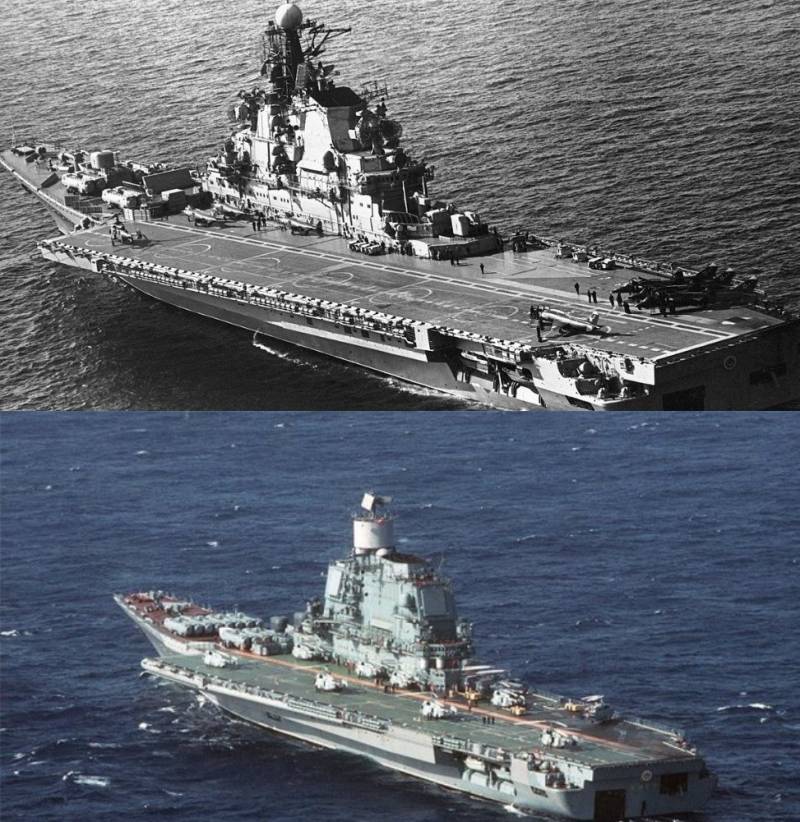
over their fathers
and admires great-grandfathers.
The depths of the sea are conquered by the fourth generation of nuclear submarines. But what is known about modern frigates and destroyers? What generation are they? X, Y or maybe Z?
Unlike submarines, the architecture and layout of surface ships are not subject to a strict set of restrictions. There are various options for placing systems and weapons. And the Navy of each country is guided by its own priorities.
The process of building ships takes many years, which contributes to an even greater variety of sub-series within one project.
And often representatives of one project combine technologies of different times.
In the world there is no clear division into generations among cruisers, destroyers and frigates. It makes sense to talk only about the belonging of the ship to a particular era, judging by the technological solutions in its design.
The first missile-armed ships were the descendants of heroes who fought in two world wars.
But structurally they had nothing in common with their ancestors. Their dimensions turned out to be so small that the traditional classification of the ship's composition has lost its meaning. Frigate, cruiser or destroyer - now the choice of designations depended only on the political course and ambitions.
Common sense forbade rocket ships from growing in size. Their weapon turned out to be compact. And the excessive concentration of weapons on one carrier raised doubts about the effectiveness of large structures overloaded with weapons.
Once, when laying the hull of a rocket ship, drawings of the hull of an artillery cruiser of the Second World War were used. It contained two nuclear reactors, 170 medium and long-range anti-aircraft missiles, a radar complex consisting of 16 antennas and ... a 40-meter wasteland formed in the middle part. In the absence of better ideas, they prepared to place Polaris ballistic missiles there. But the idea with the Polaris was soon recognized as redundant for a surface ship.
The hull belonged to a warrior from another reality. And the missile cruiser "Long Beach" dragged 40 meters of emptiness until the end of its days.
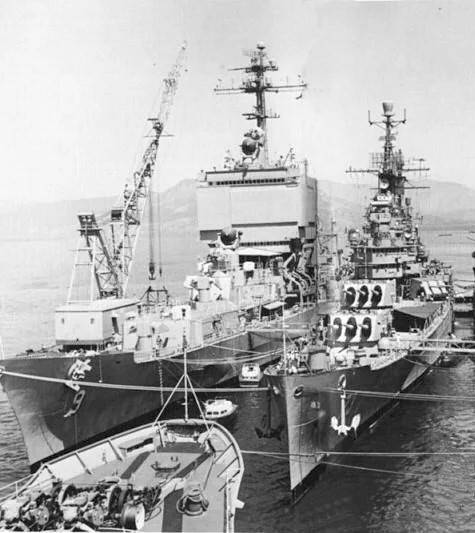
This and other examples were discussed in detail in the article "Scientific and technological revolution in the field of the Navy."
This time we turn to the changes in appearance. fleetpeaked in the late 1980s.
The Roaring Eighties. Detente Crisis in Superpower Relations. The SDI Program, Reagan's "600 Ship Fleet", Maritime Incidents in the Persian Gulf, and the Experience of the Falklands War.
Good enough reason to change the fleet? Alas, things were different.
The changes that will be discussed are rooted in the distant past. Since the middle of the last century, the directions for the growth of combat qualities have been determined, which are followed to this day.
Maximum combat stability - with a minimum number of antenna posts
The appearance of anti-aircraft missiles immediately revealed the weak link in the entire concept of shipborne air defense systems. Insufficient number of tracked and fired targets - with the threat of a massive use of air attack.
The first to answer the question was the Typhon air defense system - the embodiment of the unthinkable. An installation that implements the principles of an active phased antenna, created on the basis of radio tubes and an electronic base of the middle of the XNUMXth century. With dozens of independent radio channels for target illumination and anti-aircraft missile control.
It is not surprising that with such a design, the system turned out to be unviable.
Another alien from the future was the SCANFAR radar system. Despite the futuristic appearance, its fighting qualities, even in theory, were not too different from radars with movable parabolic antennas. Only by 1967 was it possible to combine the functions of detecting and tracking targets. The tasks of controlling the fired missiles were assigned to a group of radars of a different type.
Despite the conflicting results, SCANFAR was of particular interest because of the technical design - completely atypical for the 1950s-1960s. Eight fixed flat antennas (PAR) combined into a single system.
For obvious reasons, SCANFAR has not been widely adopted. The carriers of the experimental radar were the aircraft carrier Enterprise and the previously mentioned Long Beach.
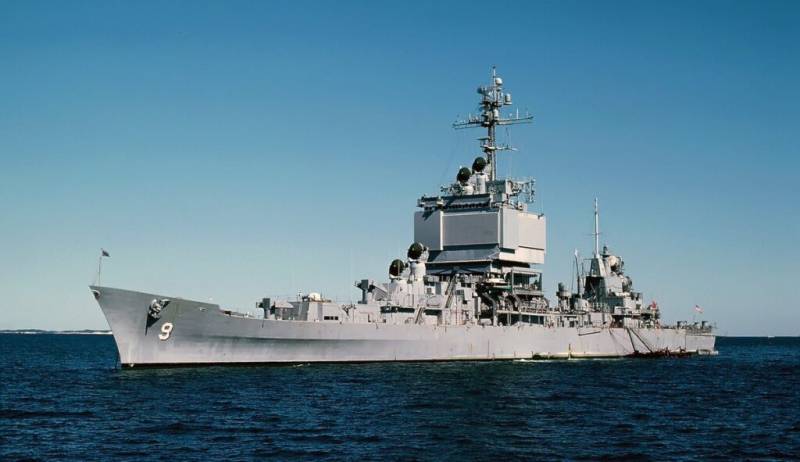
What if you were born at the wrong time? Make this time yours!
The 1957 Zamwalt failed to hit any of the air targets in the presence of President Kennedy. After the incident, the already forgotten 5-inch artillery was urgently returned to the ship - so that the cruiser could at least shoot in the direction of the enemy.
The main thing that the creators of the miracle cruiser were right about was that they guessed the direction of development of naval weapons. How all ships will look after many decades.
The real result of the search was the Aegis system with a multifunctional radar. Four flat phased canvases 4 meters wide took over all the tasks of reviewing the airspace, tracking targets and, in part, controlling fired missiles. But here we are talking about the very end of the 1970s.
The Americans were told about the appearance of the Soviet analogue of Aegis by satellite images of the project 1143.4 aircraft-carrying cruiser Baku under construction.
It is no coincidence that this particular ship was presented in the illustration at the beginning of the article, together with the same type, but so unlike it, the Kiev TAVKR (lead 1143). With the placement of most of the weapons below deck and the presence of a multifunctional radar, the fourth TAVKR of the 1143 series received many signs of a ship of the XNUMXst century.
RLC "Mars-Passat" was supposed to provide detection, classification and tracking of up to 120 targets. We will not focus on the process of birth, the successes achieved and the shortcomings of this complex. The creators of the Mars Passat needed time. How long did it take to bring the SPY-1 radar system of the Aegis system into working condition? The answer is over 10 years.

Along with the advent of multifunctional radars, the principle of organizing combat information and control systems (CICS) has changed. Previously, air defense posts could only receive primary target designation from the ship's surveillance radars. And then they were forced to act independently, using the radar equipment given to them - radar tracking and target illumination.
The new generation CICS made it possible not only to select a priority target, but also to select the most effective weapon in the current situation from the ship's arsenal, prepare data for firing and assign a launcher.
And it was planned to launch missiles from under the deck, directly from the places of ammunition storage
The Mk.41 Vertical Launcher, which was put into service in 1985, became most famous. Eight UVP sections (64 launch cells) had approximately the same mass as the previous Mk.26 installation with two beam guides and a cellar for 64 missiles. UVP did not give noticeable advantages in terms of compactness or increase in ammunition.
In turn, the UVP created previously unthinkable threats. The rocket engine turned on below deck became a source of extreme vibrations, temperatures and created the problem of reactive gases removal. A vertical launch meant the “return” of the rocket to the deck in the event of a failure of the launch booster.
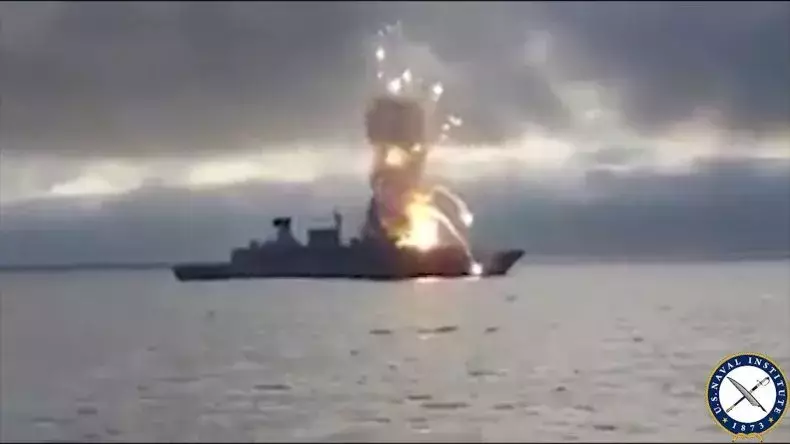
Rocket crash on the deck of the German frigate Sachsen in 2018
The advantages of the UVP were too great to pay attention to such incidents. In the design of the UVP, there was no need for mechanical movement of ammunition before launch. Compared to the beam launcher, the vertical launch installation had 10 times less power consumption and provided (in theory) a five times higher rate of missile launch.
The ability to flexibly change the composition of the ammunition load, as well as ease of use, predetermined the choice of UVP on all modern warships.
It was the line beyond which stood the fleet of a new era
The ship composition of the Western fleets can be clearly divided into what entered service before the end of the 1980s. And everything that was built later.
The first to receive a complete set of modern technologies, became the Bunker Hill missile cruiser. The fifth representative of the Ticonderoga series, which entered service in 1985.
The long service of such cruisers in the status of "first rank" is often presented as an excuse for extending the service of their peers in the Russian Navy. Unfortunately, the Ticonderoga argument doesn't work.
For 40 years of their service in the world, no ships have appeared that have fundamentally different capabilities. The solutions that are used in modern projects have been known since the Cold War.
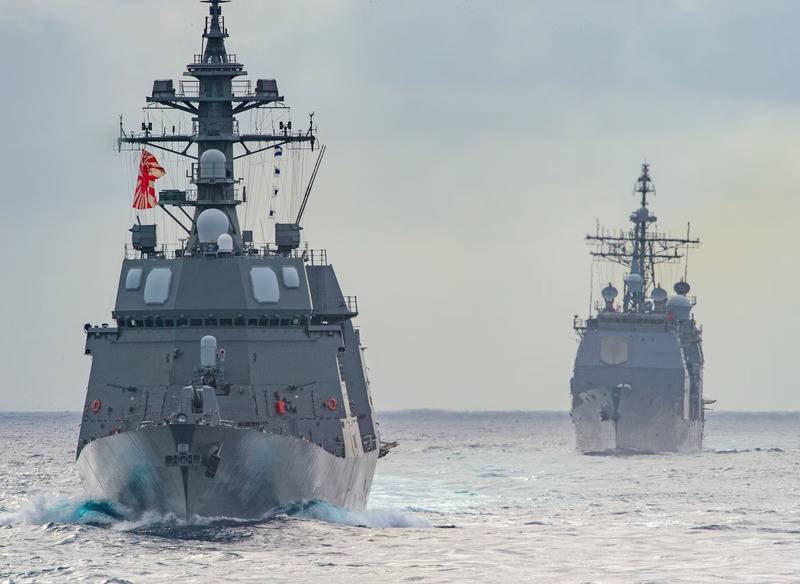
A Ticonderoga-class cruiser in the wake of a Japanese destroyer (ships have 30 years of age difference)
Modern ships are only getting weaker. Displacement and combat qualities are sacrificed in the struggle to reduce their cost. The balance is shifted towards defensive qualities.
The presence of hundreds of universal UVP allows the Ticonderoga to use any modern means and ammunition. And this does not require any changes to the design. The radar outlived its time and still remains the leader among long-range shipborne radars. The functionality of radar facilities is continuously expanded by updating software versions.
Ships of more modern projects are favorably distinguished by the absence of radar for illumination of air targets with mechanical guidance. The active phased antennas of the main radar are now capable of "guiding" missiles, highlighting dozens of targets for them. And the most advanced missiles with active guidance heads do not require any help and support from the carrier ship at all. It is worth noting that the old cruisers, armed with such missiles, are again on the same level with the most modern frigates and destroyers.
But time does not stand still.
In the design of modern ships, there is a lesser degree of use of aluminum alloys. Modularity, adaptive design is applied. Instead of excessively powerful and voracious gas turbines, preference is given to power plants of a combined type. All these are the right decisions that reduce the cost of operation. But they do not affect the increase in real combat qualities too much.
Under such conditions, ships from the 1980s remain out of competition, retaining the status of the most powerful combat units - from birth until the moment they are withdrawn from the fleet. An unprecedented event in the world stories.
They fired a direct-fire laser - to set fire to a rubber boat
Over the past decades, not a single ship with a revolutionary design and capabilities has been laid down in the world. Observed trends in military shipbuilding indicate a crisis of ideas and a complete lack of technology needed to make such a breakthrough.
Lasers and railguns: in truth, at present, no one can explain what the need for such weapons is. In the presence of a wide range of high-precision missiles of any caliber and purpose. At best, the laser is an attempt to look into the distant future.
The loudest of the proposed "innovations" produce a rather comical effect.
The idea of an arsenal ship, a carrier of hundreds of cruise missiles, which arose at the turn of the century, turned out to be meaningless in its essence. At the current cost of precision-guided munitions, it makes sense to spend money on building a full-fledged warship.
The super-destroyer "Zamvolt" was designed by the smartest people, and all their minds were directed to cutting the allocated budget.
Hence the failed return of naval artillery. Hit the enemy with blanks in any weather, not paying attention to air defense, with a minimum reaction time, covering the shore with fiery rain. The advantages of artillery are obvious, but at that time the cost of artillery shells for some reason exceeded the price tags of high-precision missiles.
Another "innovative" idea was to place the launch cells in a row, along the sides. Having equipped each UVP with kick-out panels in case of a fire or other emergency situation with a rocket.
The experience of many years of operation of more than 100 ships with UVP around the world indicates that there is no clear threat from the ammunition load requiring such security measures. All that the creators of Zamvolta achieved was a significant reduction in missile ammunition (by a third), compared with the cruisers of the 1980s.
The French made a breakthrough in the creation of the "new age" ship, hiding anchor windlasses and all deck equipment in the bow in the space below deck. This is how the “stealth frigate” of the Lafayette type appeared, due to the lack of any powerful weapon, capable of only indifferently observing the enemy.
The Danes built a hybrid destroyer and ferry ("Absalon").
Italian architects came up with a new formula for the hull, as if another ship had grown from under the bottom of the frigate! Frigate type PPA - high style. But the ancient Ticonderoga (120 UVP) will be quite surprised to learn that there are only 16 missile cells on a modern frigate, which is only slightly inferior in displacement to the old cruiser.
The Germans built 7 tons of void in an incredible way. Huge toothless frigate F000 "Baden-Württemberg".
The Future of the Royal Navy - The Type 26 Global Battleship is no different in armament from the ships of the last century. Its radio equipment should provide close control over the situation in the near zone (within a radius of 60 nautical miles). The defeat of air targets at long distances or interception in near-Earth orbit are clearly not included in the list of tasks of an ultra-modern ship. What the ships of the Cold War were able to do.
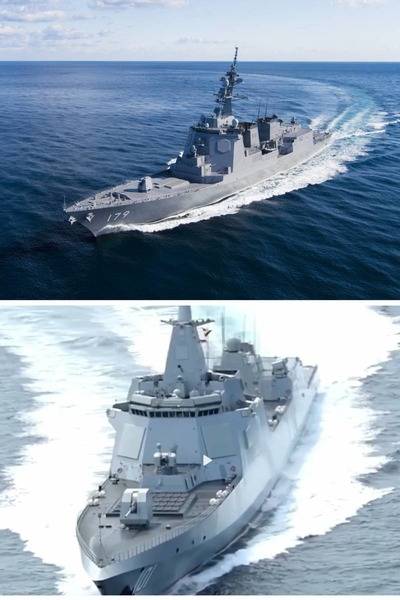
The most modern Chinese cruiser and Japanese destroyer from the early 2000s. Who is who - you will not immediately understand.
Our eastern neighbors - the Japanese, Chinese and Koreans for three decades "copy-pastilized" the ideas and solutions of the American destroyer "Burke" (project 1985). We must pay tribute to Japan - over the past three decades, several projects of "full-size" and "reduced" copies of high quality have appeared there at once, and each sub-series of Japanese destroyers is sharpened for a certain range of tasks.
The Chinese, on the contrary, hit gigantism, inflating the American destroyer to 10 tons. With a dubious result in terms of combat capabilities. In many respects, the latest ships of the Chinese Navy are inferior to ships from the 000s.
Generation Z ships
The long absence of breakthroughs in the field of military shipbuilding, oddly enough, played into the hands of the Russian Navy. Over the past couple of decades, the fleet has been replenished with pennants that combine the most successful solutions inherent in ships of the early XNUMXst century.
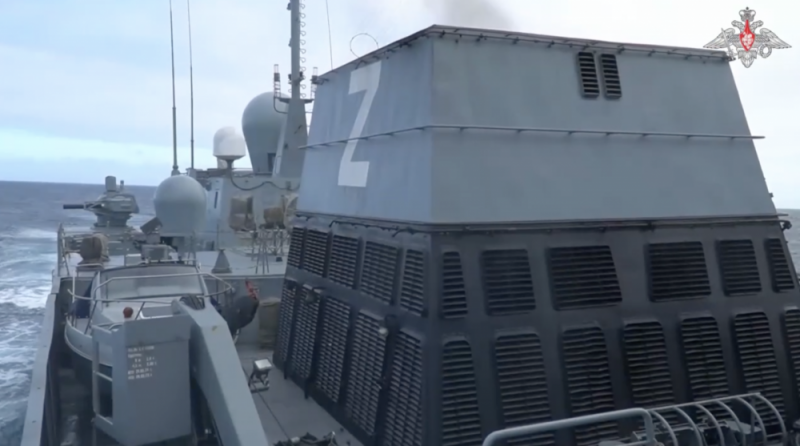
Multifunctional radar, UVP, CICS, which turns the ship into a living organism - all the ideas mentioned above were rethought and embodied in the appearance of modern corvettes and frigates.
So, over time, it became clear that the maximum unification of missile cells contains a problem - the dimensions of a standard cell do not allow the deployment of heavy missiles. On Russian ships (as well as on many Western ones), two types of UVP are now used at once - to accommodate strike and anti-aircraft weapons.
The architecture of the superstructure made it possible to implement the most optimal (among the currently known) layout of antenna posts.
The movement is provided by a combined type power plant - two full-speed gas turbines and a pair of economical diesel engines used in other modes. The high speed required for artillery battles is a thing of the past. Now the priorities are the duration of combat patrols, the extension of the life of mechanisms and the reduction of operating costs.
In the design, the influence of stealth technology is noticeable. Inclined surfaces of the sides, combined with the walls of the superstructure. The bow of the deck, hidden behind a huge bulwark. An artillery mount wrapped in a radio-absorbing casing.
At the same time, frigate 22350 turned out to be unexpectedly toothy and armed to the maximum - having a significant advantage over foreign peers.
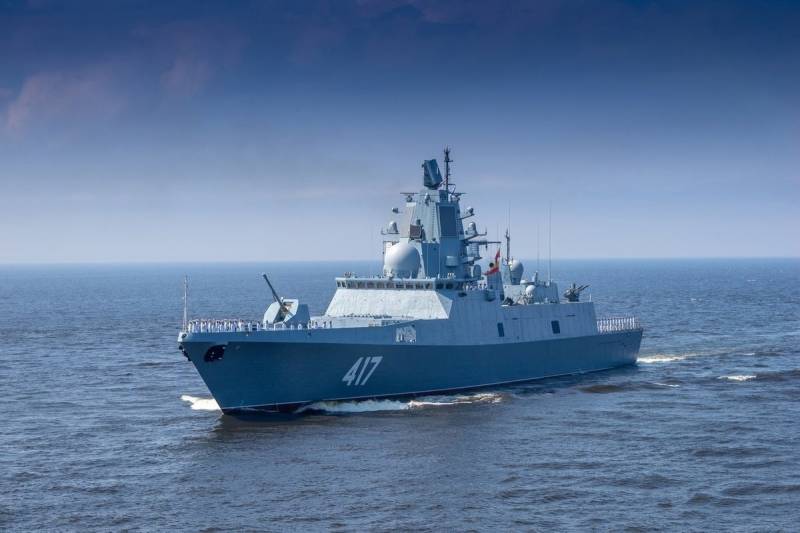
Now are you ready to look into the near future?
Combat surface ships of the second half of the XXI century
The author considers three main directions possible.
The first and most likely is the improvement of existing designs with the introduction of artificial intelligence systems, which will automate all the tasks of collecting and processing tactical information. Solve issues of combat maneuvering, navigation, use of weapons and remote control of technical means.
Next should be an increase in the overhaul life of all ship mechanisms and systems. Ships and their crews (if any) will be relieved of the need to carry out repairs on the high seas. All maintenance will be carried out in the base - before and after the trip.
The third serious point that has not been paid attention in the past is the automation of the loading of ammunition, food, spare parts and consumables in preparation for the campaign. All - to increase the coefficient of operating voltage. The ship must spend maximum time on the high seas.
Armed with universal missiles (similar to Standard-6), which are capable of hitting surface and air targets. With detachable combat modules - dronescapable of accompanying the ship by air, on water and under water.
Many of the above are being built right now. Meet the new generation of Japanese frigates.
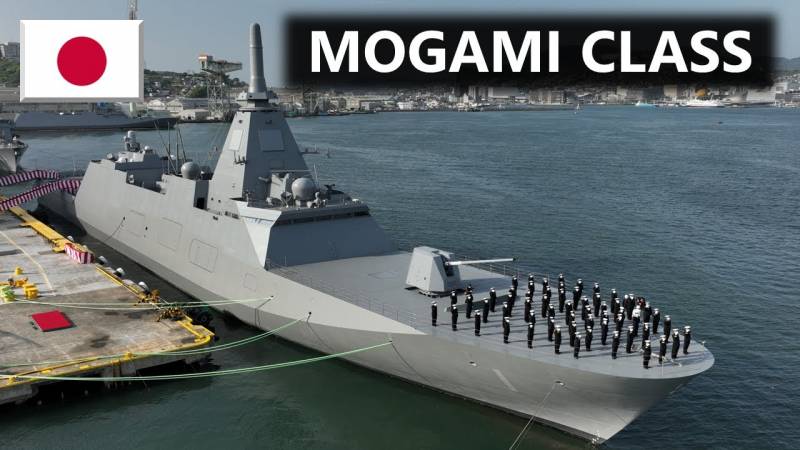
According to published data, the Mogami (30DX) project combines a composite hull, a “transparent” bridge with augmented reality technology and a mast with integrated antenna devices (a well-known global trend).
The level of automation allows the Mogami to manage with a crew of only 90 people - which is two to three times less than on other modern ships of a similar class and purpose.
The spiral movement characteristic of history allows a scenario with the revival of ideas from the recent (or very distant) past at a new technological level. The proof is the example of full electric propulsion, which is used in the projects of the latest European frigates and destroyers - following the example of turbo-electric power plants of battleships of the 1910s.
The last, purely hypothetical moment is connected with the hope for the emergence of technologies that are currently not even the slightest idea: capable of producing a genuine revolution in all areas of technology.
What will the fleet look like in half a century - in 2073?
Future will tell.
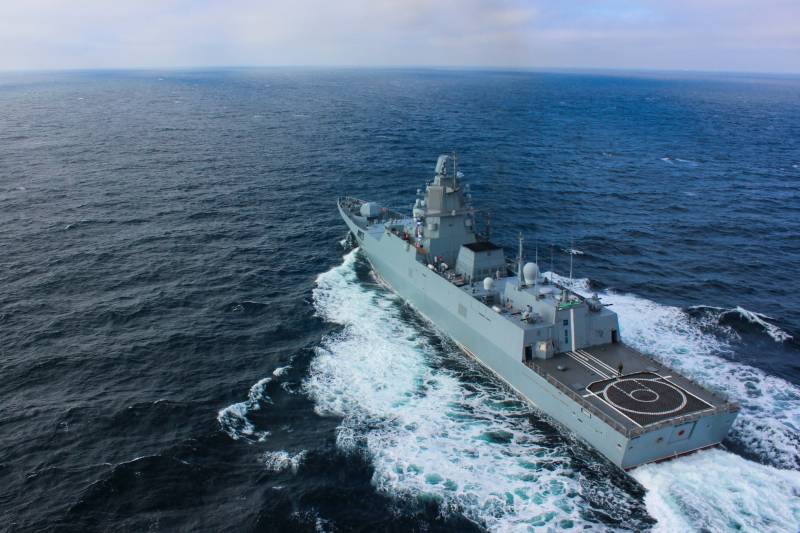
Information